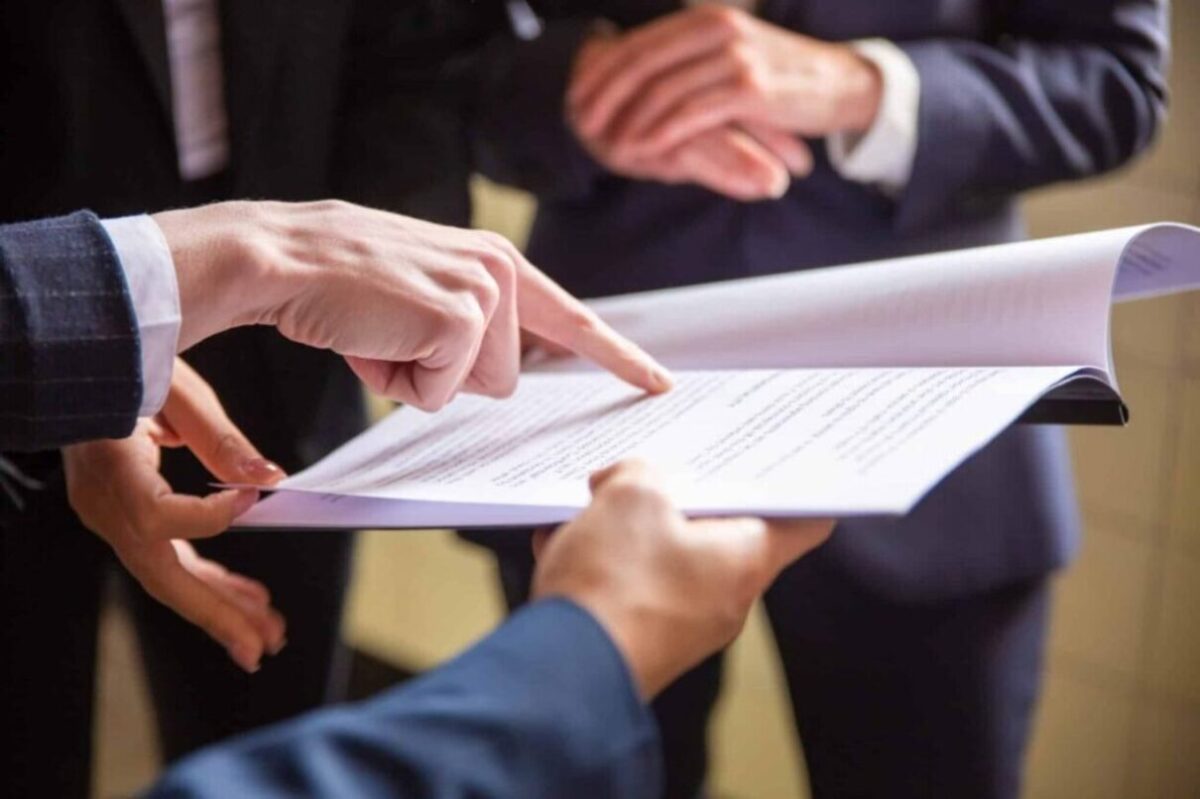What is an ER Scribe? A Complete Guide to Emergency Room Documentation and Virtual Scribes
latinopro
on
September 2, 2025

What is an ER Scribe?
A Complete Guide to Emergency Room Documentation and Virtual Scribes
An ER scribe is a trained professional who documents patient encounters in real time, and understanding what is an ER scribe helps clarify their role in handling EHR documentation and physician charting support so clinicians can focus on diagnosis, treatment, and patient care.
Table of Contents
Quick Facts At a Glance
- Job summary: Real-time clinical documentation specialist for the emergency department (ER scribe / ER medical scribe).
- Typical duties: Record histories, physical exams, labs, procedures, physician notes, and EHR updates.
- Common employers: Hospitals, urgent care centers, telehealth providers, and staffing partners (e.g., LatinoPro).
What is an ER scribe?
An ER scribe (emergency room scribe) focuses exclusively on capturing the clinical story during patient encounters. Rather than doing hands-on clinical tasks, scribes enter accurate, timely information into the electronic health record (EHR), helping ensure charts are complete, compliant, and ready for coding and follow-up.
What does an ER scribe do?
ER scribes provide physician charting support by:
- Documenting patient histories, review of systems, and physical exam findings.
- Recording lab and imaging results, procedure notes, and orders.
- Entering treatment plans, discharge instructions, and follow-up recommendations into the EHR documentation.
- Coordinating with nurses, techs, and consultants to keep the care team aligned.
Because a scribe handles documentation in real time, physicians spend less time charting and more time with patients improving both efficiency and patient experience.
ER scribe vs. medical assistant vs. virtual medical scribe
- Medical Assistant: Performs hands-on clinical tasks (vitals, injections, room prep).
- ER Scribe: Specializes in documentation and clinical note-taking during patient visits.
- Virtual Medical Scribe / Virtual ER Scribe: Performs the same documentation duties remotely via secure telehealth platforms, enabling flexible, off-site coverage.
Virtual scribes preserve documentation quality while offering scalable staffing options that work well for nights, weekends, and sudden volume increases.
The Essential Role of a Virtual Medical Assistant Support Services

Why ER scribes matter (benefits for providers)
ER scribes help emergency departments and clinics by:
- Improving accuracy: Complete, timely EHR documentation reduces errors and omissions.
- Boosting efficiency: Faster charting and fewer after-hours notes for physicians.
- Reducing burnout: Lower administrative load improves clinician job satisfaction.
- Supporting billing & compliance: Better documentation leads to more accurate coding and fewer claim denials.
- Delivering cost-effective support: Especially when using virtual medical scribes, organizations can lower overhead while maintaining chart quality.

How to become an ER scribe
- Education: Many scribes start with a high-school diploma; college coursework in biology or health sciences is helpful.
- Training: Look for scribe training programs that teach medical terminology, EHR workflows, and HIPAA compliance; employers commonly provide on-the-job EHR training.
- Skills: Fast, accurate typing; strong attention to detail; and familiarity with clinical language make a good scribe.
- Career path: Scribing is often a stepping stone for future nurses, physician assistants, and medical students because it offers real clinical exposure.
The rise of virtual ER scribes
Remote platforms and telehealth have enabled virtual scribes to participate in live encounters and document securely from off-site locations. Advantages include:
- Access to a larger, specialized talent pool.
- Flexible scheduling across time zones.
- Scalable coverage during peak hours or staffing gaps.
- Lower overhead compared with hiring additional on-site personnel.
For many hospitals and urgent-care networks, virtual scribes are a practical route to consistent EHR documentation and reduced physician charting time.
Practical tips for hiring a scribe (in-person or virtual)
- Define the scope: Clarify whether the scribe will handle charting only or also support admin tasks.
- Run a pilot: A short trial shift reveals workflow fit and EHR compatibility.
- Verify training: Confirm EHR experience and HIPAA training.
- Measure impact: Track physician time saved, documentation turnaround, and billing improvements.
A quick pilot helps you quantify ROI and tailor onboarding before committing to a long-term arrangement.
How we help
Our service connects providers with vetted virtual medical scribes trained in major EHR systems, HIPAA-safe workflows, and clinical documentation best practices. These professionals integrate with clinical teams to reduce charting time, improve record quality, and support smoother patient throughput.
FAQ Short answers for common search queries
Do ER scribes need a degree?
What is the difference between a medical assistant and an ER scribe?
Can scribes work remotely?
How do I hire a scribe for our ER?
Final thoughts & next step
ER scribes are the behind-the-scenes specialists who make emergency care more efficient and safer by handling critical documentation. Whether you choose on-site or virtual medical scribes, the right approach reduces charting time, improves billing accuracy, and lessens clinician burnout.
If you’re ready to explore a pilot or learn how virtual scribes can fit into your workflow, 👉 Connect with Latino Pro today to discuss virtual medical scribe options tailored to your ER or clinic.
Ready to take the next step?
Book now!
Discover more Amazing Blogs
A quiet brilliance unfolds as you step into this blog — like opening a window to a calm, sunlit morning where each idea arrives with purpose and grace. Every article feels like a conversation with a trusted guide, gently helping readers rediscover the art of working smarter, not harder.
Venture further, and you’ll find content tailored to both the seasoned entrepreneur and the rising virtual professional. From legal offices to real estate teams, each post offers insight crafted with experience, care, and a deep understanding of what modern work truly needs.
What is an ER Scribe? A Complete Guide to Emergency Room Documentation and Virtual Scribes
What is an ER Scribe? A Complete Guide to Emergency Room Documentation and Virtual Scribes An ER scribe is a
How Do Document Review Specialists Virtual Assistant Operate in Law Firms?
How Do Document Review Specialists Virtual Assistant Operate In Law Firms How Do Virtual Assistant Document Review Specialists Work Within
Why Virtual Legal Assistants Important In Law Firms
Why Virtual Legal Assistants Important In Law Firms Why Virtual Legal Assistants Important In Law Firms The new legal environment
Executive Administrator vs Executive Assistant: What’s the Real Difference?
Executive Administrator vs Executive Assistant What's the Real Difference? Understanding the roles of an executive administrator vs executive assistant, often
Legal Research Assistant
The Practical Guide for Busy Lawyers, Law Firms, and Virtual Legal Assistants If you’ve Ever Wondered How to Free Up
Administrative Assistant Hard Skills: What Do You Need To Know?
Administrative Assistant Hard Skills Administrative Assistant Hard Skills: What Do You Need To Know? Administrative assistant hard skills, technical abilities,
Legal Assistant Certification: Is It the Correct Move for Your Career?
Legal Assistant Certification Legal Assistant Certification: Is It The Correct Move For Your Career? Legal assistant certification program is a
The Complete Guide to Hiring a Virtual Assistant for Lawyers
Virtual Assistant for Lawyers The Complete Guide to Hiring a Virtual Assistant for Lawyers If you’re interested in the legal
Outsourced Legal Intake: Why a Legal Intake Specialist Matters for Law Firms
Outsourced Legal Intake Outsourced Legal Intake: Why A Legal Intake Specialist Matters For Law Firms The first impression legal matters
Accounting Interview Questions and Answers: How Can You Prepare Effectively?
Accounting Interview Questions And Answers Accounting Interview Questions and Answers: How Can You Prepare Effectively? Starting a career in the
Top Legal Outsourcing Companies
Top Legal Outsourcing Companies: Your Friendly Guide To Smart Legal Support Ever find yourself staring at a mountain of legal
Remote Legal Assistant Jobs
Remote Legal Assistant Jobs: Find, Qualify & Thrive in Law Finding remote legal assistant jobs today is both promising and
Real Doctor’s Note Example
Real Doctors Note Example Authentic Real Doctors Note Example: What You Need to Know Need a real doctors note example?
Why Are Paralegal Assistant Jobs So Critical in Today’s Legal Landscape?
Paralegal Assistant Jobs Why Are Paralegal Assistant Jobs So Critical in Today’s Legal Landscape? IntroductionLooking for insights into paralegal assistant
Blueface Looks: Shocking New Photos from Prison Go Viral
Blueface Looks Shocking New Photos from Prison Go Viral Blueface’s new prison photos reveal a dramatic transformation, shocking fans with
Elon Musk Quotes
Elon Musk Quotes: Inspiration, Meaning, and How to Apply Them in Real Life The tech visionary Elon Musk is known
What Is an Intake Specialist at a Law Firm?
What Is an Intake Specialist at a Law Firm The Unsung Hero of Every Law Firm Picture this: Someone’s had
Virtual Legal Assistant Services: Save Time, Cut Costs, and Scale Your Firm
Virtual Legal Assistant Services Virtual Legal Assistant Services: Save Time, Cut Costs, and Scale Your Firm If evenings and weekends
Legal Assistant vs Legal Secretary: What’s the Real Difference?
Legal Assistant vs Legal Secretary Legal Assistant vs Legal Secretary: What’s the Real Difference? Choosing between a legal assistant vs
Is Legal Assistant Training The Best Way To Begin Your Legal Career?
Legal Assistant Training Is Legal Assistant Training The Best Way To Begin Your Legal Career? The focus key phrase “legal
What Is the Difference Between Transcription and Translation?
Transcription and Translation What Is the Difference Between Transcription and Translation? Many people confuse transcription with translation, especially when they
Care Coordinator vs Case Manager: What’s the Difference?
Care Coordinator vs Case Manager Care Coordinator vs Case Manager: What's the Difference? If you've been wondering how a care
Case Management Software for Government
Case Management Software for Government: Features & Benefits Government solutions that replace paper and spreadsheets with auditable workflows, citizen portals,
How to Become a Legal Transcriptionist: Your Step-by-Step Guide
How To Become A Legal Transcriptionist How to Become a Legal Transcriptionist: Your Step-by-Step Guide If you've ever asked yourself
How to Build a Rewarding Career
Legal Transcriptionist Work Legal Transcriptionist Work: How to Build a Rewarding Career If you’ve ever wondered what it’s like to
Virtual Legal Assistant Benefits
Virtual Legal Assistant Benefits: How VAs Save Time, Cut Costs & Boost Billable Hours If you’re running a law firm
Cristiano Ronaldo Injury Update: Recovery Timeline, Match Outlook & Digital Health Support
Cristiano Ronaldo Injury Update Recovery Timeline, Match Outlook & Digital Health Support Football fans, sports media readers, and healthcare professionals
What Is a Legal Intake Specialist?
What Is a Legal Intake Specialist What Is a Legal Intake Specialist? In the intro, let's define what is a
How Do I Become a Legal Transcriptionist
How Do I Become a Legal Transcriptionist? A Practical Guide If you’re here wondering, “How do I become a legal
Attorney vs Lawyer: Key Differences and How a Virtual Legal Assistant Can Help
Attorney vs Lawyer Key Differences and How a Virtual Legal Assistant Can Help The debate over attorney vs lawyer has
How to say “hi” in Spanish
How to Say Hi in Spanish Essential phrases for greeting people in Spanish Master essential Spanish greetings and learn when
Remote Medical Interpreter Jobs
Remote Medical Interpreter Jobs: Everything You Need to Know Finding remote medical interpreter jobs can feel like navigating a maze—especially
Legal Intake Specialist Job Description: What Does the Work Entail?
Legal Intake Specialist Job Description Legal Intake Specialist Job Description: What Does the Work Entail? If you're searching for an
Paralegal Assistant Salary
Paralegal Assistant Salary in 2025: What You Need to Know Knowing how much a paralegal assistant salary earns in 2025
Top Remote Paralegal Consultation Services for Law Firms
Remote Paralegal Consultation Top Remote Paralegal Consultation Services for Law Firms Are you wondering how remote paralegal consultation can benefit
What Does It Take to Be a Legal Assistant
What Does It Take to Be a Legal Assistant? 7 Key Steps & Skills Becoming a stellar legal assistant or
How Legal Consultation Can Help in Insurance Claims
How Legal Consultation Can Assist In Insurance Claims How Legal Consultation Can Help in Insurance Claims If you ever had
Top 5 Essential Skills for a Legal and Administrative Assistant Career
Legal And Administrative Assistant Top 5 Essential Skills for a Legal and Administrative Assistant Career Thinking of becoming a legal
Virtual Case Manager Jobs: What Should You Know Before Applying?
Virtual Case Manager Jobs Virtual Case Manager Jobs: What Should You Know Before Applying? If you're searching for virtual case
Can a Legal Assistant Become a Lawyer
Can a Legal Assistant Become a Lawyer? Definitive Guide Can a legal assistant become a lawyer? For many paralegal professionals,
How to Become a Legal Assistant: Your Step-by-Step Career Guide
How to Become a Legal Assistant How to Become a Legal Assistant: Your Step-by-Step Career Guide If you're wondering how
What Does Contingent Mean in Real Estate?
What Does Contingent Mean In Real Estate What Does Contingent Mean in Real Estate? A Clear Guide for Buyers and
Accounting Virtual Assistant Salary: Here’s What You Must Know
Accounting Virtual Assistant Salary Accounting Virtual Assistant Salary: Here's What You Must Know In today’s competitive business environment, many US
Operations Assistant Salary in 2025: Career Outlook, Pay Trends & Job Security
Operations Assistant Salary Operations Assistant Salary in 2025: Career Outlook, Pay Trends & Job Security If you're considering a operations
Top Healthcare Outsourcing Companies in the US: Who Leads the Industry Today?
Top Healthcare Outsourcing Companies In The US Top Healthcare Outsourcing Companies in the US: Who Leads the Industry Today? In
What Do Real Estate Virtual Assistants Do?
What Do Real Estate Virtual Assistants Do? What Do Real Estate Virtual Assistants Do? Essential Tasks You Need to Know
What Does a Medical Scribe Do? Understanding the Role in Today’s Healthcare System
What Does a Medical Scribe Do? Understanding the Role in Today’s Healthcare System If you’ve ever asked, what does a
What Does Good Customer Service Mean to You: Expert Guide
What Does Good Customer Service Mean to You What Does Good Customer Service Mean to You: Key Insights Good customer
Executive Assistant Duties
Executive Assistant Duties: The Ultimate 2025 Guide As organizations navigate an increasingly complex business landscape, executive assistants (EAs) with expertise
How to Become a Social Media Manager
How to Become a Social Media Manager How to Become a Social Media Manager in 2025 (Step-by-Step Career Guide) In
What is a Case Manager: A Complete Guide to Their Role and Impact
What is a Case Manager What is a Case Manager: A Complete Guide to Their Role and Impact When life
Marketing Assistant Job Description: The Ultimate Guide
Marketing Assistant Job Description Marketing Assistant Job Description: The Ultimate Guide A well-crafted marketing assistant job description is the foundation
Bilingual Virtual Receptionist: A Smart Move for a Diverse Business Landscape
Bilingual Virtual Receptionist A Smart Move for a Diverse Business Landscape A bilingual virtual receptionist can help your business connect
Appointment Setter vs Sales Representative: What’s the Real Difference?
Appointment Setter vs Sales Representative What’s the Real Difference? In the world of sales, roles can blur. That’s why many
Administrative Virtual Assistant Duties
Administrative Virtual Assistant Duties Administrative Virtual Assistant Duties: The Ultimate Guide In a fast‑paced business landscape, every minute counts. Enter
Virtual Receptionist Jobs
What Are Virtual Receptionist Jobs? A Complete Guide In an era of remote work and on‑demand customer service, virtual receptionist
Legal Assistant Interview Questions
Legal Assistant Interview Questions Legal Assistant Interview Questions: What Should You Expect? Legal assistant interview questions can make or break
Todd Chrisley Prison Sentence
A 2025 Guide to Understanding This Virtual Legal Role When the headline “Todd Chrisley prison sentence” first broke, fans of
Virtual Receptionist Appointment Scheduling
The Complete Guide to Virtual Receptionist Appointment Scheduling In today’s always-on world, missing a single client phone call can mean
Virtual Scribing: Hire a Virtual Scribe for Better Patient Care
Virtual Scribing Hire a Virtual Scribe for Better Patient Care Virtual or digital scribing provides real-time documentation support for healthcare
Executive Assistant Job Description
Executive Assistant Job Description Executive Assistant Responsibilities — 10 Core Duties & How to Master Them “An executive assistant (EA)
Efficient Project Management with Virtual Assistants: 2025 Insights
Efficient Project Management With Virtual Assistants Efficient Project Management with Virtual Assistants: 2025 Insights If you’re juggling multiple deadlines, stakeholder
Master Operation Assistant Work Today Easily
0perations Assistant Work Master Operation Assistant Work Today Easily A Virtual Operations Assistant ensures your business moves forward efficiently by
Jams Launches Peanut Butter and Jelly, Protein Craze
Jams Launches Peanut Butter and Jelly Athlete-backed Jams takes on the peanut butter and jelly market amid the protein craze
Andrea Gibson Dies at 49
The death of Andrea Gibson Celebrated Poet and Performance Artist Leaves a Lasting Legacy Celebrated poet and performance artist Andrea
Virtual Assistant for Lead Generation
Virtual Assistant for Lead Generation How a Virtual Assistant for Lead Generation Elevates Your Sales in 2025 Have you ever
Legal Assistant and Paralegal
Legal Assistant and Paralegal: What You Need to Know Choosing between a legal assistant and paralegal can feel daunting—after all,
What Is a Paralegal
What Is Paralegal? A 2025 Guide to Understanding This Virtual Legal Role Blue-collar work roles, such as paralegals and legal
Virtual Operations Assistant Manager
What Does a Virtual Operations Assistant Manager Really Do in 2025? In today’s remote-first business world, staying organized in your
Virtual Assistant For Accountant
Virtual Assistant For Accountant Virtual Assistant for Accountant: Your 2025 Guide to Growing Smarter, Not Harder If you’re an accountant
How To Become A Paralegal
Want to Work in Law Without Becoming a Lawyer? Here's the Truth About How to Become a Paralegal If you
Todd Chrisley
Todd Chrisley Trump’s Hollywood-Style Pardon: Did Todd Chrisley Buy Freedom With Fame and Politics? When former President Donald Trump pardoned
Todd Chrisley Legal Assistant
Todd Chrisley Legal Assistant Trump’s Chrisley Pardon Sparks Outrage: Is Justice Only for the Famous? The Chrisleys are back in
Todd Chrisley Pardoned or Privileged?
Pardoned or Privileged? The Todd Chrisley Saga Sparks Debate on Justice and Influence In a move that has ignited both
What is a Legal Case Manager
What is a Legal Case Manager What Is a Legal Case Manager? Role, Salary & Hiring Guide 2025 Have you
What Is Legal Assistant
What Is Legal Assistant A Guide for Law Firms and Legal Professionals As the legal industry changes with technology, law
Remote Legal Intake Specialist
Paralegal vs Legal Assistant What’s the Right Legal Career Path for You? If you’re interested in the legal field but
Paralegal vs Legal Assistant
Paralegal vs Legal Assistant What’s the Right Legal Career Path for You? If you’re interested in the legal field but















































































































